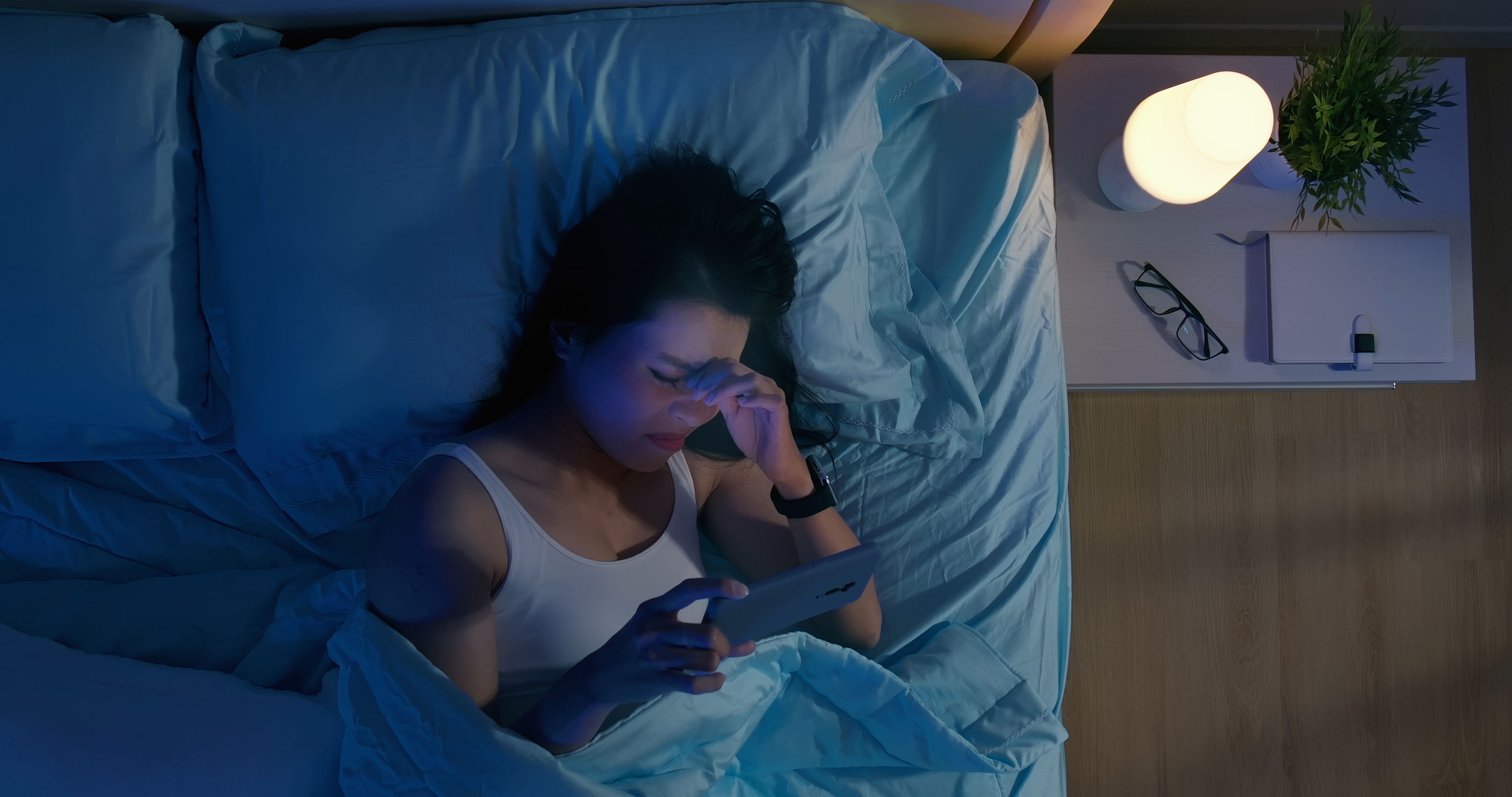As face-to-face visits, meetings and education have given way to remote communications since the pandemic changed life as we knew it, many of us are embracing our electronic devices more fully than ever before. Where would we be without virtual visits, social media and web conferencing?
Unfortunately, these same precious devices can expose us to unhealthy levels of blue light. Blue light pours from their LED screens as if from a faucet, and our habit of staring at them as we work, play, connect and learn is compromising our health and sleep patterns.
Don’t get me wrong: Blue light is not inherently bad. It’s perfectly wonderful in nature, where it lends beautiful shades of blue to our lakes, oceans and skies. When we go outdoors and soak in blue light as part of the sun’s full spectrum, our energy levels and alertness rise. In the morning, the sun’s light is nature’s cup of coffee, stimulating us to start the day. But there’s a reason the sun goes down at night. Our bodies need to prepare for sleep.
What Is Blue Light?
Just a quick refresher: Blue light is light with a wavelength of 415 to 500 nanometers on the electromagnetic spectrum. It has the shortest wavelength and highest energy level of visible light. If you remember learning ROYGBIV (Red, Orange, Yellow, Green, Blue, Indigo, Violet) as a kid, blue light is the BIV portion of the spectrum.
To offer context, just beyond the BIV end of the visible spectrum is ultraviolet (UV) radiation, followed by x-rays and gamma rays. On the high end, gamma rays are often used to destroy brain tumors. X-rays, of course, penetrate bodies to provide physical imaging. And right next-door to BIV, UV radiation has the power to cause skin cancer. Blue light may not be as powerful as UV, but it has enough juice to wreak havoc on our body’s systems.
How It Affects Our Melatonin Pathways and Circadian Rhythm
When UV light enters our eye, the cornea and lens do a great job of filtering it so it can’t reach the retina. Not so with blue light. Blue light gets to the back of the eye and can, over time, contribute to macular degeneration, a leading cause of irreversible blindness. More immediately, blue light is absorbed by a receptor in the eye that controls the melatonin cycle and circadian rhythm. It suppresses melatonin pathways, thus affecting a range of metabolic processes.
Most of us know melatonin as a sleep inducer. But it’s an essential hormone that keeps a lot of other physical processes in check, too. When blue light suppresses your melatonin pathways, that suppression can lead to obesity, diabetes, heart disease, strokes, cancer and other diseases, as well as anxiety and depression. Memory can be compromised, too, because melatonin affects not only the quantity of sleep but the quality, and high-quality sleep helps us create long-term memories.
For example, if your children are doing distance education and then staying on their laptops close to bedtime, they might not form as many long-term memories. In other words, they may yield less knowledge from their studies that day.
From your own standpoint, you may find that your brain doesn’t make as many creative connections as you’d like. Sleep is a brilliant way to create new connections. How many times have you woken up with a great work idea or solution? It’s because your brain does more out-of-the-box thinking during sleep than during daytime. Poor-quality sleep hinders creative thought.
What You Can Do to Tone Down the Blue
The good news is that you can take steps to improve your relationship with blue light. In general, strive to get more natural light during the day and less artificial blue light in the evening. More specifically, you can try these things:
Physically block the blue light. Here you have some options:
Whether you buy screen protectors or glasses, they need to be really yellow (the direct opposite of blue). If the colors on your screen look normal, it’s not working.
- Take advantage of your system’s nighttime preferences and turn the screen setting all the way to warm from 7 p.m. to morning.
- Use a blue-light-blocking screen protector.
- Get a pair of yellow-lens glasses.
Eat a healthy diet. A healthy diet can help strengthen your eyes to resist the detrimental effects of blue light. Aim for lots of green, leafy vegetables such as kale and Swiss chard, and include fruits and vegetables with beta carotene: pumpkin, carrots, sweet potatoes, etc.
Being aware of the risks related to blue light and taking actions to counter them can help you improve your quality and quantity of sleep, boost your productivity and face the world with a positive outlook.


